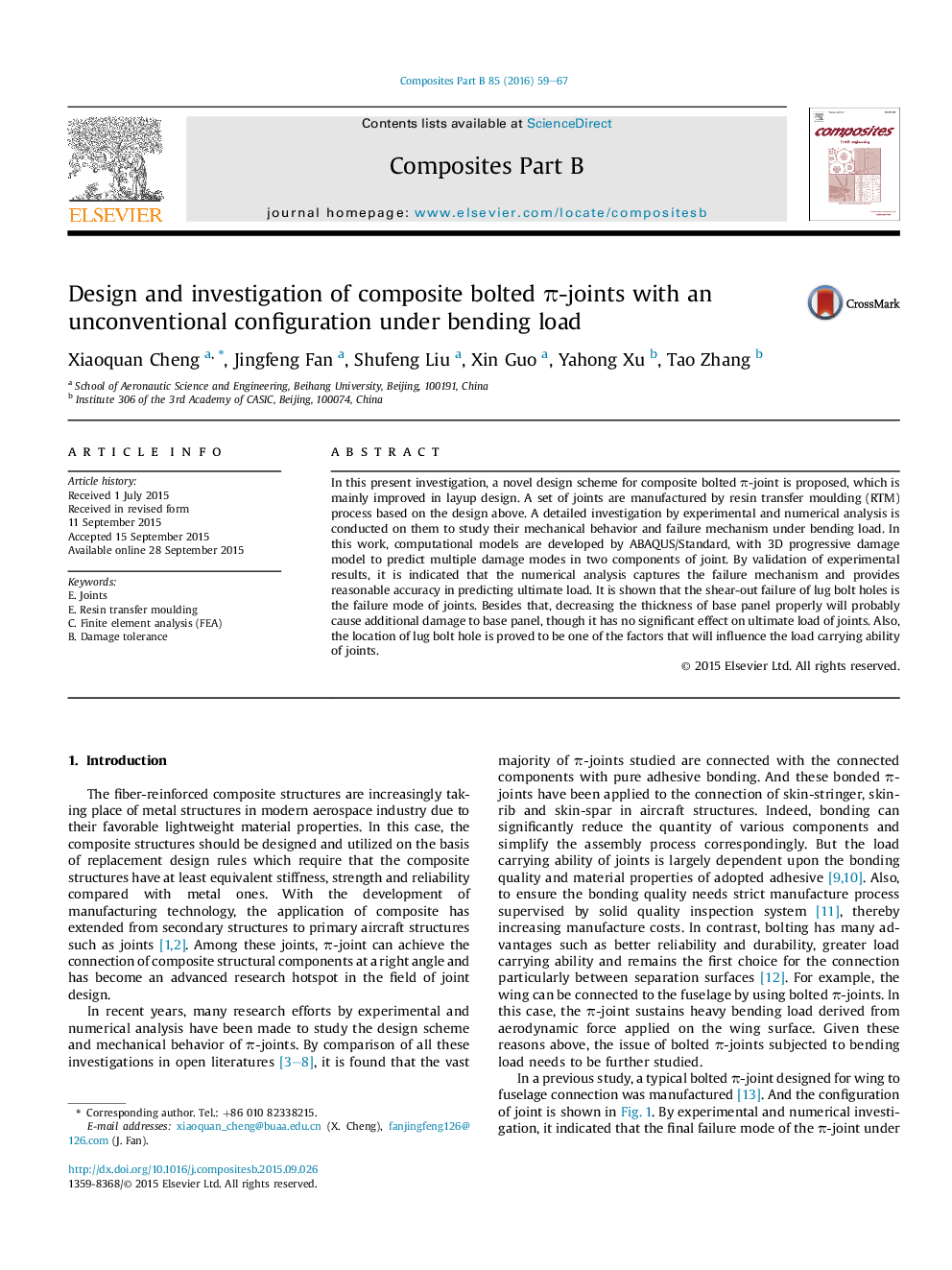| Article ID | Journal | Published Year | Pages | File Type |
|---|---|---|---|---|
| 817132 | Composites Part B: Engineering | 2016 | 9 Pages |
In this present investigation, a novel design scheme for composite bolted π-joint is proposed, which is mainly improved in layup design. A set of joints are manufactured by resin transfer moulding (RTM) process based on the design above. A detailed investigation by experimental and numerical analysis is conducted on them to study their mechanical behavior and failure mechanism under bending load. In this work, computational models are developed by ABAQUS/Standard, with 3D progressive damage model to predict multiple damage modes in two components of joint. By validation of experimental results, it is indicated that the numerical analysis captures the failure mechanism and provides reasonable accuracy in predicting ultimate load. It is shown that the shear-out failure of lug bolt holes is the failure mode of joints. Besides that, decreasing the thickness of base panel properly will probably cause additional damage to base panel, though it has no significant effect on ultimate load of joints. Also, the location of lug bolt hole is proved to be one of the factors that will influence the load carrying ability of joints.
